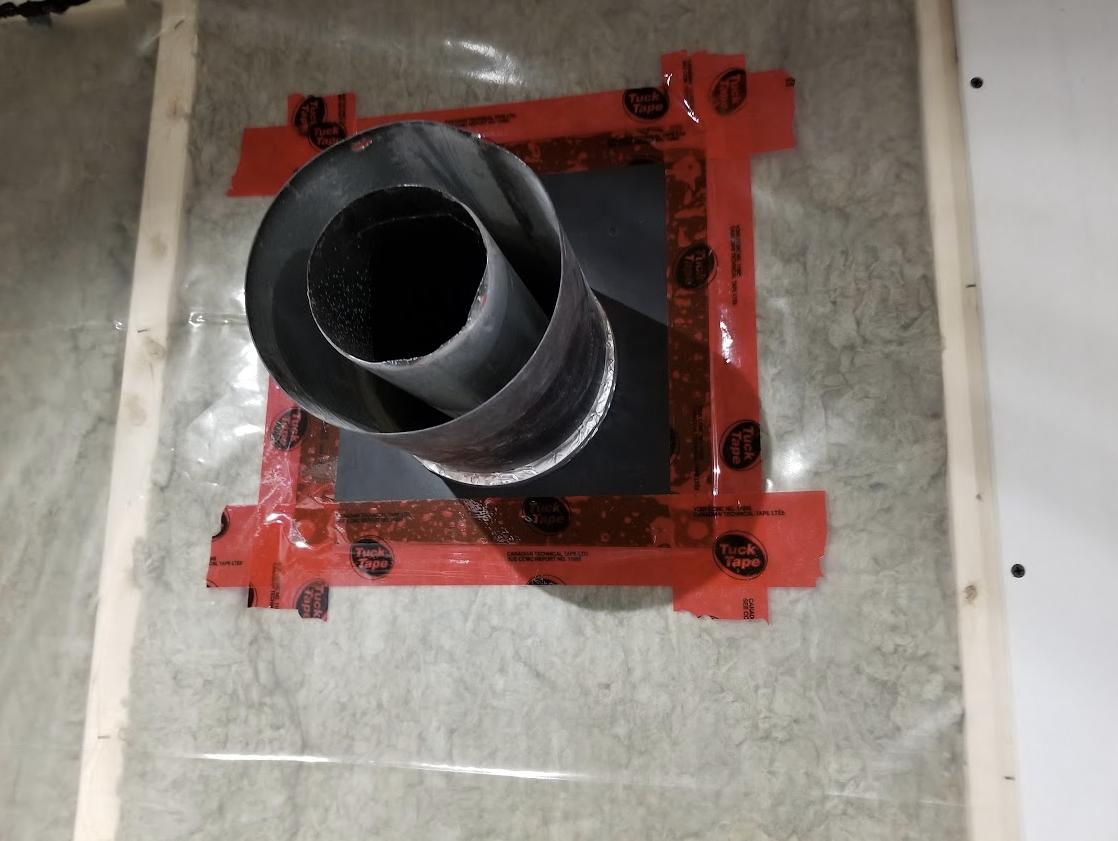I have a fireplace exhaust going through an exterior wall. It is a double-wall one for a freestanding propane fireplace, with the supply air coming in the outer chamber. The wall has rockwool insulation, and is covered in 6mil poly vapor barrier.
Sealing the vapor barrier to the pipe would provide continuous vapor protection, but my gut reaction is plastic + fireplace exhaust is not a great idea. That said, the exterior of the stovepipe doesn't typically get very hot since it's pulling in outside air. What's the correct way to do this?
Edit: It's a freestanding propane stove, so part of this pipe comes through the wall and is visible. The only view from the side I can find has it covered in plastic (and before I removed the brick wall), but this shows roughly how it sits in the room.
Edit:
I adapted the accepted answer:
I realized I had the square steel trim piece from the old install, so I used that just to avoid taping plastic directly to the pipe. It has a lip that fits around the pipe with about a 1/8" gap, which is sealed with foil tape. The vapor barrier is cut back to overlap the steel square by about 3/4" and sealed with tuck tape.
I'm putting cement board and then some kind of stone over this, and got a new round (and smaller and nicer-looking) 7" trim collar to use to finish it off.




